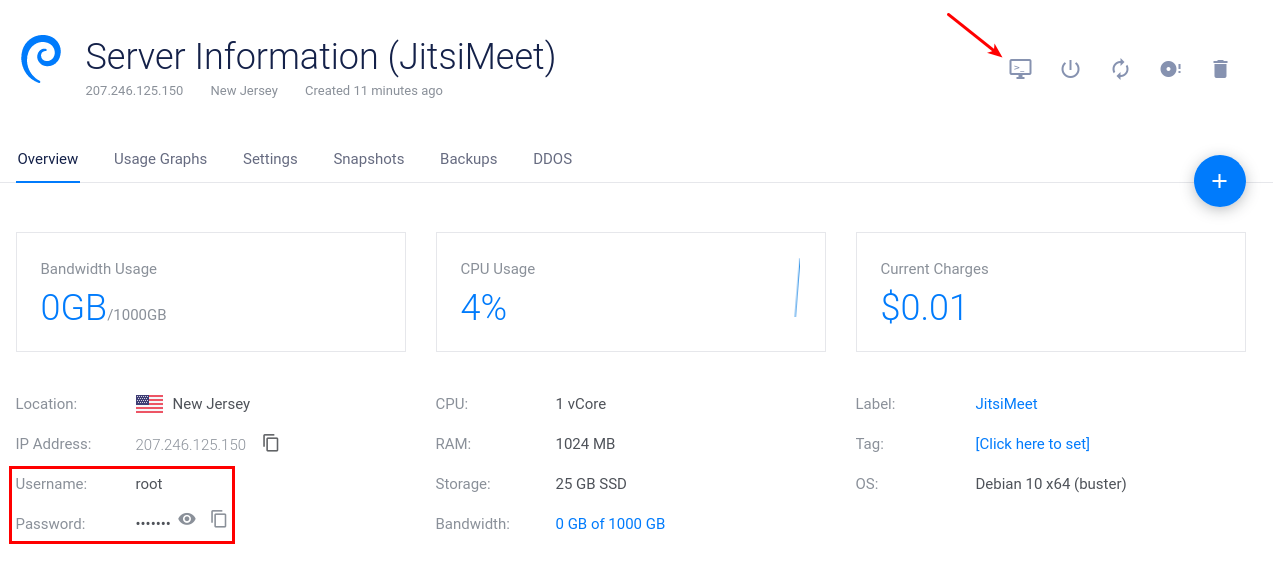
Optionally, you can also go ahead and disable password-based login via SSH for all users, including the new user account we just created, by updating these values in the same sshd config file: # Disable password-based login via ssh for all users
#JITSI SERVER UPDATE#
To do so, type in sudo nano /etc/ssh/sshd_config, and update PermitRootLogin to no and add AllowUsers username as shown below: Disable root login via SSH Now that we have a new user with limited privileges that can run “sudo” commands and can access the server via SSH keys let’s lock down our root user, as it is usually the most targeted account by hackers.
#JITSI SERVER PASSWORD#
Once done, you can log in to the server by just using the ssh command without entering the user password, although you will need to enter the password of your SSH key. You might get a message like Could not open a connection to your authentication agent when switching SSH keys, you’ll need to start ssh-agent first using: eval `ssh-agent` pub” extension is your public key, the other one is your private key, never share the private key with anyone. ssh folder, there’ll be two files, the one with “. Ssh-copy-id -i ~/.ssh/keyname.pub Switch ssh keys on clientĭuring the ssh-keygen process, you’ll be prompted for file location, use the default one or give a new location by typing in /home/username/.ssh/keyname, and enter a strong password for the SSH key. Log out of the server or just open up a new terminal on your computer to create SSH keys: # Create ssh keys Using SSH keys instead of passwords provides you with better security, as SSH keys are far more long and complex than any password could ever be you can also add an extra password to the SSH keys, requiring both the SSH key and the password to access the server. Let’s create a new user on a server that can use “sudo” to do day-to-day administration tasks.

If your cloud provider didn’t ask you to choose a username while creating it, you are given root access to your server it is recommended to not use the “root” user, which has unlimited privileges and can execute any command, even ones that could potentially disrupt your server. Sudo unattended-upgrades -dry-run -debug Step 3.3: Creating a “sudo” user Sudo dpkg-reconfigure -priority=low unattended-upgrades Let’s update packages and configure automatic updates so that our server gets patched automatically. You’ll be prompted with “The authenticity of host…”, just type yes, and then enter the password. Open up the terminal on your device, and run this command: ssh you chose a username while creating the virtual machine, use that instead of root, and replace 123.45.67.89 with the IP address of your VM. Now, let’s configure our server: Step 3.1: Connect to the Server via SSH Step 3: Configuring the Virtual Machine for Jitsi Meet We’ll be securing connections to our Jitsi Meet instance via a trusted SSL certificate from Let’s Encrypt.

# The following lines are desirable for IPv6 capable hosts Next up, add the same FQDN in the /etc/hosts file: # Opening hosts fileĪdd 123.45.67.89 to that file, put your server IP & hostname: # Output Jitsi recommends setting up a FQDN, you can do so using the following command: sudo hostnamectl set-hostname

Step 2.1: Setting up Fully Qualified Domain Name I’ll be using as an example in the tutorial from now on. Note down the IP address of the virtual machine, and go to your domain registrar and add an A record with the IP address of the VM. I’ll be using an Ubuntu VM on Linode, although, Debian and other Debian-based distros should be fine, you’ll need to use Docker if you want to use any other distro. You’ll need a Linux virtual machine with at least these minimum specs for proper functioning:Īlthough, you’ll need to increase your RAM and CPU depending on the number of users, pick a server location that’s closest to you for low latency. This tutorial will cover pretty much everything you need to know about self-hosting your private Jitsi Meet server to host meetings and video calls.Īlright, let’s get into it.

#JITSI SERVER FREE#
There’s a free hosted version of Jitsi Meet that you can use for up to 100 participants, they also a premium Jitsi as a Service by 8×8, the parent company of Jitsi. Jitsi Meet is a free and open-source alternative to popular video conferencing services like Google Meet, Zoom, and Microsoft Teams.Īll Jitsi meetings are ephemeral, and encrypted using DTLS-SRTP, and can operate in 2 ways, either via peer-to-peer mode for 1-to-1 meetings or via the Jitsi Videobridge Jitsi also has support for end-to-end encryption.


 0 kommentar(er)
0 kommentar(er)
